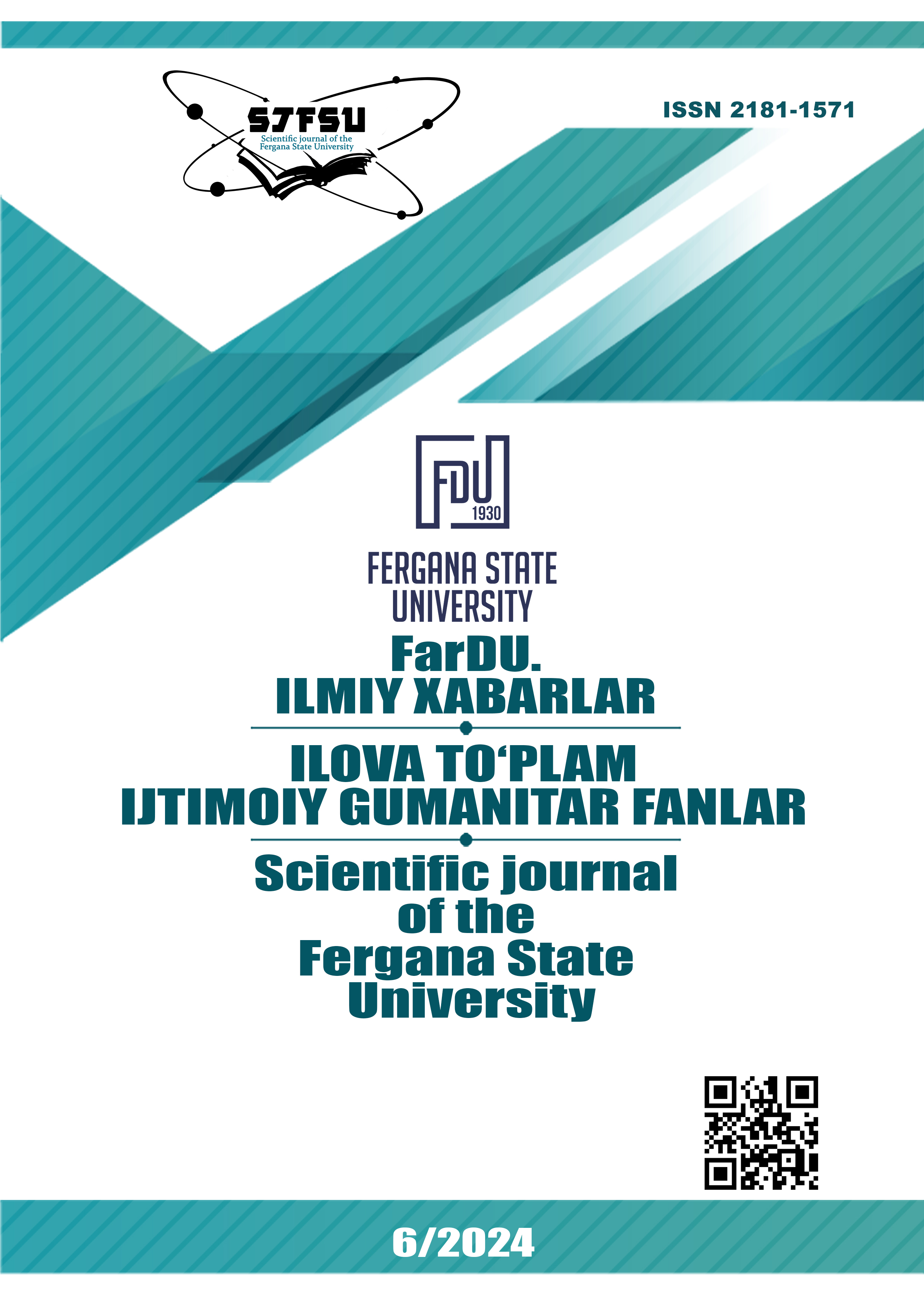SEMANTIC ANALYSIS OF VISUAL COGNITIVE VERBS IN UZBEK AND ENGLISH
Keywords:
visual cognitive verbs, Uzbek language, English language, semantic analysis, morphological features, syntactic structure, cognitive linguistics, perception, visual process, comparative analysis, polysemy, metaphor.Abstract
This study explores the semantic characteristics of visual cognitive verbs in Uzbek and English, aiming to uncover similarities and differences in their conceptual and linguistic representations. Visual cognitive verbs, such as "see," "look," and "watch" in English, and their Uzbek equivalents, are fundamental to expressing perception and cognition. The analysis employs a comparative linguistic approach, drawing on data from corpora, dictionaries, and native speaker insights to examine the verbs' semantic fields, collocational patterns, and syntactic structures.
Key findings reveal that while both languages share common perceptual categories, such as active and passive vision, significant differences emerge in the nuances and usage contexts. For instance, Uzbek verbs often encode additional cultural or situational information, reflecting the language's tendency toward specificity and context-dependence. English verbs, on the other hand, exhibit a broader range of metaphorical extensions, linking visual perception with cognitive and abstract domains.
The study also highlights the role of polysemy and idiomatic expressions in shaping the semantic networks of these verbs, demonstrating how cultural and cognitive factors influence language structure. By integrating semantic analysis with cognitive linguistics, this research contributes to a deeper understanding of how vision-related cognition is linguistically encoded across languages.
The findings have implications for translation studies, language teaching, and cross-cultural communication, providing insights into how perception and cognition intersect with linguistic representation. This study underscores the importance of examining semantic variation to foster better intercultural understanding and linguistic theory development.
References
Antilla R. An Introduction to Historical and Comparative Linguistics. – New York: Macmillan, 1972. – 438 p.
Evans V., Green M. Cognitive linguistics an introduction. Edinburgh university press. 2006. – P.830
Muhamedova S. O‘zbek tilida fe’l valentliklari (harakat fe’llari misolida). Toshkent: Bookmany print, 2023. 81 b.
Safarov Sh. Kognitiv tilshunoslik. “Sangzor” nashriyoti, Jizzax. 2006. – B.92
Safarov Sh. Tarjimashunoslikning kognitiv asoslari. Toshkent, 2019. – B. 276
Аъламова М. Ўзбек тилидаги феълларда нисбат категорияси. Тошкент: Фан, 1992. 144 б.
Бўронов Ж. Инглиз ва ўзбек тиллари қиёсий грамматикаси. – Тошкент: Ўқитувчи, 1973. – 284 б.
Голубкова Е.Е. Фразовые глаголы движения (когнитивный аспект). – М.:
Ғуломов А.Ғ. Феъл. – Тошкент: Фан, 1954. – 88 б.
Киселёва С. В. Когнитивная модель значения глагола (на примере глагола партитивной семантики)// Вестник, 2011. – pp.28-43
Муҳамедова С.Х. Ўзбек тилида ҳаракат феълларининг семантикаси ва валентлиги. – Тошкент: Фан, 2005. – 122 б.
Нурмонов А., Махмудов Н., Аҳмедов А., Солихўжаева С. Ўзбек тилининг мазмуний синтаксиси. – Тошкент: Фан, 1992. – 298 б.
Турсунов У., Мухторов Ж., Рахматуллаев Ш. Ҳозирги ўзбек адабий тили. – Тошкент: Ўзбекистон, 1992. – 146 б.
Фердаус С. Феъл. Ҳозирги ўзбек адабий тили. 1 том. – Тошкент, 1966. – 192 б.
Ҳожиев А.П. Феъл. – Тошкент: Фан, 1973. – 192 б.
Downloads
Published
Issue
Section
License
Copyright (c) 2025 Scientific journal of the Fergana State University

This work is licensed under a Creative Commons Attribution-NonCommercial-NoDerivatives 4.0 International License.

